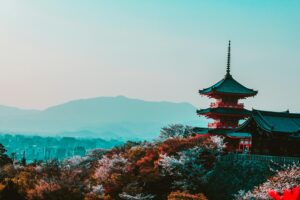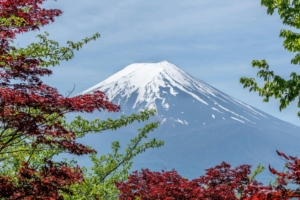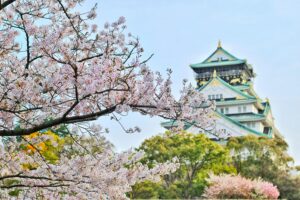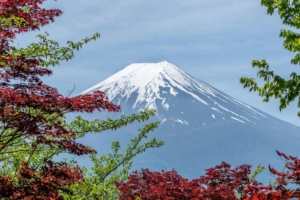Introduction to Ise Grand Shrine
Located in the heart of Mie Prefecture, the Ise Grand Shrine is one of Japan’s most sacred Shinto shrines and a pinnacle of spiritual significance. This guide aims to provide you with a detailed overview of what makes this shrine a must-visit destination for both spiritual seekers and cultural enthusiasts.
Historical Significance: The Ise Grand Shrine, also known as Ise Jingu, has been a central place of worship for over 2000 years. It is dedicated to the sun goddess Amaterasu, who is considered the ancestress of the Imperial Family of Japan. The shrine’s architecture, primarily constructed from cypress wood, is a testament to ancient Japanese building techniques, which have been preserved through centuries.
Spiritual Practices: Visitors to the shrine can observe unique Shinto rituals and ceremonies that are held throughout the year. These rituals are a window into the spiritual practices that have been preserved over millennia and are central to understanding the cultural fabric of Japan.
Visitor Experience: Beyond the spiritual and historical allure, the Ise Grand Shrine area offers a range of activities and experiences. From guided tours that explain the intricate details of the shrine’s history and rituals to nearby attractions such as the Okage Yokocho, a street that recreates a townscape from the Edo period, there is something for everyone.
Local Cuisine and Shopping: No visit to the shrine is complete without exploring the local cuisine. Delight in Mie Prefecture’s specialties like Ise-ebi (lobster) and Matsusaka beef. The area also offers a variety of shops selling unique crafts, traditional wares, and shrine amulets known as ‘omamori’.
For those planning a visit, incorporating the Ise Grand Shrine into your travel itinerary will provide a deeply enriching cultural and spiritual experience. Stay tuned for more detailed guides, including travel tips and the best times to visit, to ensure your journey to this sacred site is as fulfilling as possible.
- Explore the spiritual significance and historical background of the shrine
- Participate in or observe traditional Shinto rituals
- Enjoy local cuisine and shopping in nearby areas
Whether you are a history buff, a spiritual seeker, or simply curious about Japanese culture, the Ise Grand Shrine offers a profound glimpse into the traditions that have shaped the identity of this fascinating country.
Historical significance and spiritual importance
The Ise Grand Shrine, located in the heart of Mie Prefecture, Japan, is not only a pinnacle of spiritual reverence but also a monument of profound historical significance. This sacred site, which has been attracting pilgrims and tourists alike for centuries, serves as a vital link to Japan’s cultural and spiritual heritage.
At the core of the Ise Grand Shrine’s allure is its unique architectural style, known as Shinmei-zukuri, which is characterized by simple, unadorned wooden buildings that reflect Shinto ideals of natural beauty and purity. The shrine complex is rebuilt every 20 years in a ritual known as Shikinen Sengu, symbolizing the Shinto belief in renewal and impermanence.
The spiritual importance of the shrine is immense, as it is dedicated to Amaterasu-omikami, the sun goddess, who is considered the ancestor of the Imperial Family and the guardian deity of the Japanese people. The annual rituals and ceremonies performed here, such as the famous Daijosai, are central to the Shinto religious calendar and attract thousands of worshippers who seek to reconnect with their spiritual roots.
Visitors to the Ise Grand Shrine can also experience the rich tapestry of local customs and traditions. The surrounding area offers a variety of cultural experiences, from traditional performances and crafts to local cuisine, providing a holistic view of the region’s heritage.
For those planning a visit, it is advisable to consider the best times to visit, typically during the quieter months outside of festival periods, to fully appreciate the serene and sacred atmosphere of the shrine. Practical tips such as how to get there, where to stay, and what other attractions to visit can enhance the travel experience, making a trip to the Ise Grand Shrine a truly unforgettable journey into the spiritual heart of Japan.
- Explore the architectural marvel of Shinmei-zukuri style
- Participate in or observe the spiritual rituals and ceremonies
- Immerse in local cultural experiences and traditional crafts
- Enjoy local cuisine that offers a taste of Mie Prefecture’s culinary delights
By delving into the historical depths and spiritual essence of the Ise Grand Shrine, visitors not only witness a cornerstone of Japanese culture but also partake in a journey that transcends the physical to touch the spiritual and historical soul of Japan.
Planning Your Visit to Ise Grand Shrine
Visiting the Ise Grand Shrine, a pivotal site of Shinto spirituality and Japanese culture, requires thoughtful planning to fully appreciate its historical and spiritual significance. This guide aims to provide you with all the necessary information to ensure a memorable and enriching experience.
Understanding Ise Grand Shrine
The Ise Grand Shrine, known as Ise Jingu, consists of two main shrines: Naiku and Geku. Naiku is dedicated to Amaterasu-Omikami, the sun goddess, while Geku honors Toyouke-Omikami, the deity of agriculture and industry. As you plan your visit, consider the spiritual and cultural importance of both shrines and prepare to respect their sacred nature.
Best Time to Visit
The shrine offers different experiences throughout the year. The best time to visit is during the spring and fall when the weather is mild and the natural scenery is at its peak. Special festivals and events, such as the New Year celebration and the Shikinen Sengu ceremony held every 20 years, provide unique experiences that are worth scheduling your visit around.
Travel Tips and Practical Information
- Getting There: Ise Grand Shrine is accessible by train from major cities like Tokyo and Osaka. The nearest station is Ise-shi Station, from which you can take a bus or walk to the shrine.
- Guided Tours: Consider taking a guided tour to enhance your understanding of the shrine’s history and rituals. English-speaking guides are available.
- Local Attractions: Combine your visit with trips to nearby attractions such as the Okage Yokocho street, which offers a variety of local food and shopping options.
Enhancing Your Experience
To make your visit truly unforgettable, consider downloading a travel itinerary that includes not only the Ise Grand Shrine but also other attractions in Mie Prefecture. Engage with the shrine through multimedia elements like video walkthroughs and interviews with local experts available on our website. Additionally, share your own experiences and photos to help enrich the community’s understanding of this majestic site.
Stay Updated
Before your visit, check the latest information on visiting hours, ticket prices, and available services on our official website. This will ensure you have the most current details for a smooth and enjoyable visit.
By preparing adequately, you can ensure your visit to the Ise Grand Shrine is as enriching and fulfilling as possible. Embrace the spiritual journey and the cultural beauty of this sacred site.
Best Time to Visit Ise Grand Shrine
Planning a trip to the Ise Grand Shrine, one of Japan’s most sacred sites, involves understanding the best times to visit to enhance your spiritual and cultural experience. This guide will help you decide when to plan your visit, taking into account weather, cultural events, and visitor tips to ensure a memorable journey.
Seasonal Considerations
- Spring (March to May): The shrine is surrounded by blooming cherry blossoms, making it a picturesque time for visits. The weather is mild, although it can be a bit crowded due to the cherry blossom season.
- Summer (June to August): Summer brings the shrine’s lush greenery to life, but be prepared for hot and humid conditions. Early morning visits are recommended to avoid the heat and the crowds.
- Autumn (September to November): Autumn is highly recommended due to the comfortable temperatures and the stunning fall colors that frame the shrine grounds. It’s also less crowded, offering a more serene experience.
- Winter (December to February): Winter is the least crowded season, and you can enjoy the shrine’s peaceful atmosphere in cooler weather. However, ensure you dress warmly.
Each season offers a unique atmosphere at Ise Grand Shrine, but visiting during special events or festivals can be particularly rewarding. The Shikinen Sengu Ceremony, held every 20 years, is a significant event where sacred buildings are rebuilt, and sacred treasures are renewed. The next ceremony is scheduled for 2033, making it a unique time for visitors to experience this ancient tradition.
For those looking to avoid crowds, weekdays are generally less busy than weekends. Early mornings or late afternoons are also ideal times to visit, as you can enjoy the tranquility of the shrine with fewer visitors.
Remember to check the latest travel advisories and local guidelines before planning your visit to ensure a safe and enjoyable trip. With the right timing, your visit to Ise Grand Shrine can be a deeply fulfilling experience, connecting you with the rich cultural and spiritual heritage of Japan.
How to Get to Ise Grand Shrine
Visiting the Ise Grand Shrine, a pivotal site in Japan’s cultural and spiritual landscape, requires some planning, especially if you’re traveling from afar. This guide provides detailed information on the various transportation options available to help you reach this sacred destination with ease.
- By Train: The most convenient way to reach Ise Grand Shrine is by train. From Tokyo, take the Shinkansen (bullet train) to Nagoya Station and then switch to the Kintetsu Limited Express, which goes directly to Iseshi Station. The entire journey takes approximately three hours.
- By Car: If you prefer to drive, the shrine is accessible via the Ise Expressway. Parking is available near the shrine, though it can be crowded during peak seasons.
- By Bus: Direct buses are available from various cities, including Nagoya and Osaka. These buses drop you off near the shrine, making it a convenient option for those who prefer not to navigate train transfers.
- By Air: For international visitors, the nearest airport is Chubu Centrair International Airport in Nagoya. From there, you can take a train or bus to the shrine.
Once you arrive in Ise, it’s a short walk to the shrine from Iseshi Station or Ujiyamada Station. Local buses also run frequently between the station, the shrine, and other attractions in the area.
For those looking for a more immersive experience, consider visiting during the early morning to witness the shrine’s tranquil atmosphere without the crowds. Additionally, exploring the surrounding area, which is rich in history and natural beauty, can enhance your visit.
Remember to check the latest travel advisories and transportation schedules before your trip, as these can change seasonally and impact your travel plans.
By following this guide, you can ensure a smooth journey to Ise Grand Shrine, allowing you more time to immerse yourself in the spiritual and historical significance of this iconic site.
What to Expect at Ise Grand Shrine
Visiting the Ise Grand Shrine, one of Japan’s most sacred sites, offers a unique blend of spiritual enrichment and cultural immersion. This guide will help you understand what to expect during your visit, from the shrine’s rich history to practical visitor tips.
Historical and Spiritual Significance
The Ise Grand Shrine, known for its deep spiritual significance, has been a pilgrimage site for centuries. It is dedicated to Amaterasu-omikami, the sun goddess, which makes it a central figure in Shinto religion. The shrine’s architecture, primarily made from cypress wood and rebuilt every 20 years in a ritual called Shikinen Sengu, symbolizes the Shinto belief in the impermanence and renewal of nature.
Architectural Marvels
The shrine complex is split into two main parts: Naiku (Inner Shrine) and Geku (Outer Shrine). Each offers a glimpse into ancient Japanese architecture and the natural beauty surrounding them. The Uji Bridge leading to the Naiku and the distinctive thatched roofs of the shrine buildings are just a few of the architectural highlights that await visitors.
Rituals and Events
Throughout the year, the Ise Grand Shrine hosts various rituals and events that visitors can witness. These include daily morning and evening prayers, seasonal festivals, and special ceremonies during the New Year. Participating in or observing these rituals can provide a deeper understanding of Japanese spiritual practices and community life.
Practical Visitor Information
- Best Time to Visit: The shrine is open year-round, but seasons can dramatically change the experience. Spring and autumn offer mild weather and scenic beauty, making them ideal times for a visit.
- Getting There: Ise Grand Shrine is accessible by train from major cities like Tokyo and Osaka. The nearest station is Ise-shi Station, from which visitors can take a bus or taxi to the shrine.
- Local Attractions: Beyond the shrine, the area boasts attractions such as the Okage Yokocho, a street lined with traditional shops and eateries, and the Ise-Shima National Park, known for its natural beauty.
Enhancing Your Visit
To make the most of your visit, consider downloading a travel itinerary that includes the Ise Grand Shrine and other local attractions. Engaging with multimedia content like video walkthroughs or interviews with local experts can also enrich your experience. Don’t forget to check for any updates on visiting hours or available services before you go.
Whether you’re seeking spiritual solace or cultural enrichment, a visit to the Ise Grand Shrine is bound to be a memorable part of your journey through Japan.
Architectural Highlights of Ise Grand Shrine
The Ise Grand Shrine, known for its profound spiritual significance and historical depth, offers visitors a unique glimpse into the architectural elegance that has been preserved through centuries. This sacred site, consisting of two main shrines, Naikū and Gekū, along with about 125 secondary shrines, showcases a distinctive style of Japanese architecture that has influenced various aspects of cultural design.
One of the most striking features of the Ise Grand Shrine’s architecture is its use of natural materials. The shrine complexes are primarily constructed from solid cypress wood, with thatched roofs made from Japanese cypress bark. This not only provides durability and weather resistance but also adds to the aesthetic and spiritual harmony of the settings.
Another notable architectural element is the Shikinen Sengu ceremony, which involves the reconstruction of the shrine every 20 years. This tradition, which dates back over 1,300 years, is a testament to the shrine’s architectural and cultural sustainability. It reflects the Shinto belief in the impermanence of nature and the renewal of materials, ensuring that the sanctuary remains both physically and spiritually rejuvenated.
| Architectural Element | Description |
|---|---|
| Material Used | Cypress wood and cypress bark thatching |
| Design Philosophy | Harmony with nature, simplicity, and sustainability |
| Cultural Significance | Reflects Shinto beliefs in renewal and impermanence |
Visitors to the Ise Grand Shrine can also observe the unique way the buildings are constructed without the use of nails. This ancient technique, known as ‘kanawa tsugi’, connects wooden pieces perfectly and exemplifies the craftsmanship and engineering prowess of ancient Japanese builders.
Understanding these architectural nuances not only enriches the visit but also deepens appreciation for Japan’s cultural heritage, making a trip to the Ise Grand Shrine a truly enlightening experience.
Rituals and Ceremonies at Ise Grand Shrine
Exploring the Ise Grand Shrine, one of Japan’s most sacred sites, offers a unique glimpse into the spiritual and cultural traditions of the country. This section delves into the various rituals and ceremonies that are integral to the shrine’s identity and allure for both locals and tourists alike.
The Ise Grand Shrine, known for its serene and majestic presence, hosts several rituals that are steeped in Shinto traditions. These ceremonies vary throughout the year, aligning with the agricultural calendar and significant spiritual dates.
- Goshikinen Sengu (Rebuilding Ceremony): Held every 20 years, this ceremony involves the reconstruction of the shrine buildings and the renewal of sacred garments and treasures. It symbolizes the Shinto belief in renewal and impermanence.
- Kagura (Sacred Dance): Performed daily, Kagura dances are an offering to the deities. The dance is accompanied by ancient music and is a must-see for visitors, encapsulating the spiritual dedication and artistic heritage of the shrine.
- Tsukinami-sai (Monthly Festival): This monthly festival is held to honor the deities and pray for peace and prosperity. It’s a quieter, more reflective ceremony compared to the grander annual festivals.
Each ceremony at the Ise Grand Shrine is a testament to the deep spiritual connection and respect that the Japanese people hold for their cultural traditions. Visitors are encouraged to witness these rituals firsthand, as they offer a profound insight into the spiritual life of Japan beyond the usual tourist experience.
| Ceremony | Date | Significance |
|---|---|---|
| Goshikinen Sengu | Every 20 years (Next: 2033) | Rebuilding of shrine structures |
| Kagura | Daily | Sacred dance offering to deities |
| Tsukinami-sai | Monthly | Prayers for peace and prosperity |
For those planning a visit, understanding these rituals will enhance the appreciation of the Ise Grand Shrine’s cultural and spiritual significance. Whether you are seeking spiritual solace or a deeper understanding of Japanese culture, the rituals and ceremonies at Ise Grand Shrine offer a compelling and enriching experience.
Enhancing Your Experience at Ise Grand Shrine
Visiting the Ise Grand Shrine, a pivotal site of Shinto spirituality and Japanese culture, offers a unique journey into the heart of Japan’s religious traditions and architectural beauty. To truly enhance your experience, it’s essential to delve deeper into what makes this location so special and how you can make the most of your visit.
Understanding the Spiritual Significance
The Ise Grand Shrine, known as Ise Jingu, holds a profound place in the hearts of many Japanese. It is dedicated to Amaterasu-omikami, the sun goddess, which makes it a key pilgrimage site. Understanding the shrine’s spiritual roots will enrich your visit, providing a deeper appreciation of the ceremonies and the architectural designs you will witness.
Immersive Cultural Experiences
Engage with the shrine’s culture through various activities. Participate in traditional rituals, observe the Shinto priests as they perform their sacred duties, or schedule your visit during one of the many festivals held throughout the year. Each experience provides a unique insight into the living traditions of the shrine.
Practical Tips for Visitors
Planning your visit to the Ise Grand Shrine can be as spiritual as the visit itself. Here are a few tips:
- Best Time to Visit: While the shrine is beautiful year-round, visiting during the quieter months (late autumn to early spring) allows a more personal experience.
- Getting There: Ise Grand Shrine is accessible by train from major cities like Tokyo and Osaka. The nearest station is Ise-shi Station, from where you can take a bus directly to the shrine.
- Local Attractions: Combine your visit with trips to nearby attractions such as the Okage Yokocho street, which offers a variety of local foods and traditional crafts.
Enhance Your Visit with Multimedia
To truly bring your experience to life, consider exploring online resources before your visit. Watch video walkthroughs, listen to interviews with cultural experts, and view visitor photos to prepare for your journey. These resources can provide a richer context and enhance your anticipation.
By integrating these elements into your visit, you can transform a simple tour into a profound cultural and spiritual journey. The Ise Grand Shrine is not just a destination; it’s an experience that resonates with the echoes of Japan’s ancient past and its continuing traditions.
Guided tours and cultural experiences at Ise Grand Shrine
Exploring the Ise Grand Shrine offers a unique glimpse into the rich tapestry of Japanese culture and spirituality. This revered site, known for its serene beauty and historical significance, provides visitors with a variety of guided tours and cultural experiences that enhance the understanding and appreciation of its traditions.
Guided Tours: To truly experience the Ise Grand Shrine, consider taking part in a guided tour. These tours are led by knowledgeable guides who provide insightful commentary on the shrine’s architecture, history, and the religious practices observed here. Visitors can choose from several tour options, each tailored to different interests and time constraints.
- Standard tours cover the main shrine areas and provide a general overview of the site’s significance.
- Extended tours include visits to lesser-known parts of the shrine complex and detailed discussions of Shinto rituals.
- Private tours offer a more personalized experience, ideal for those seeking a deeper understanding of the shrine’s cultural and spiritual aspects.
Cultural Experiences: Beyond the guided tours, the Ise Grand Shrine also hosts a variety of cultural experiences that allow visitors to engage more deeply with Japanese traditions. These activities include:
- Tea ceremony demonstrations, where visitors can learn about and participate in this ancient art form.
- Seasonal festivals, which offer a chance to see traditional music, dance, and religious ceremonies.
- Workshops on Japanese crafts like calligraphy and kimono wearing, providing hands-on learning opportunities.
Each of these experiences is designed to enrich the visitor’s journey and provide a more comprehensive understanding of the cultural heritage preserved at Ise Grand Shrine.
For those planning a visit, it’s advisable to check the official Ise Grand Shrine website or contact local tourism offices for the latest information on tour schedules and cultural events. This ensures a well-planned and fulfilling visit to one of Japan’s most sacred sites.
Local Dining and Shopping Options Near Ise Grand Shrine
When visiting the Ise Grand Shrine, one of the most revered Shinto sites in Japan, enhancing your experience goes beyond the spiritual and historical exploration. The area around the shrine offers a variety of local dining and shopping options that can make your visit even more memorable.
Local Dining: Ise City is famous for its local cuisine, which includes Ise-ebi (lobster), Matsusaka beef, and Akafuku mochi. Many restaurants near the shrine specialize in these delicacies. For a truly local experience, try the Ise Udon, a simple yet delicious dish served with a thick broth and soft noodles, perfect for replenishing energy after a day of shrine visits.
- Ise Udon Tei: A popular spot known for its authentic Ise Udon.
- Matsusaka Yakiniku: Ideal for trying the world-renowned Matsusaka beef.
- Akafuku Honten: Perfect for a sweet treat, serving traditional mochi since the Edo period.
Shopping Options: The Oharai-machi street, leading up to the shrine, is lined with shops selling a variety of goods from traditional crafts to unique souvenirs. This street captures the essence of old Japan and is a great place to pick up mementos of your visit.
- Katamachi Lacquerware Store: Offers exquisite local lacquerware that makes for beautiful, durable souvenirs.
- Nakamura Tea Life Store: A must-visit for tea enthusiasts, offering a selection of fine Japanese teas.
- Shinmei-ichi: A local market held on the 5th and 20th of each month, where you can find everything from food to crafts.
Exploring the local dining and shopping options near Ise Grand Shrine not only supports the local economy but also deepens your understanding of the region’s culture and traditions. Whether you’re savoring a local dish or picking out a handcrafted souvenir, these experiences add an enriching layer to your visit to this sacred site.
Exclusive Content
Discover the enchanting Ise Grand Shrine, a pivotal site of Shinto spirituality and a jewel of Japanese cultural heritage. Our exclusive content delves deep into the heart of Ise Grand Shrine tourism, offering you a unique perspective not found in typical travel guides.
Embark on a virtual journey with our exclusive video walkthroughs, capturing the serene atmosphere and intricate rituals of the shrine. These videos are complemented by insightful interviews with local experts who share secrets and stories of the shrine’s centuries-old traditions.
Planning your visit is easier than ever with our customizable downloadable travel itinerary. This handy guide not only includes a visit to the Ise Grand Shrine but also features other must-see attractions in Mie Prefecture, ensuring a well-rounded travel experience.
Experience the shrine through the eyes of fellow travelers in our user-generated content section. Here, visitors share their personal stories and photos, offering diverse perspectives and tips that go beyond conventional travel advice.
Stay informed with the latest updates on visiting hours, ticket prices, and services at the Ise Grand Shrine. Our content is regularly updated to ensure you have the most current information at your fingertips, making your travel planning seamless and enjoyable.
Whether you’re seeking spiritual solace, historical insights, or a picturesque escape, our exclusive guide to Ise Grand Shrine tourism is your gateway to an unforgettable adventure.
Video Walkthroughs and Expert Interviews
Exploring the Ise Grand Shrine is a journey into the heart of Japan’s spiritual landscape. To enhance your visit, we’ve compiled exclusive video walkthroughs and expert interviews that offer a deeper understanding of this sacred site.
Our video walkthroughs provide a virtual tour of the Ise Grand Shrine, showcasing its majestic architecture and serene environment. These videos are designed to give you a feel of the atmosphere before you even step foot on the premises. From the towering torii gates to the tranquil streams, each element is captured to reflect the shrine’s aesthetic and spiritual significance.
In addition to the visual experience, we’ve conducted interviews with local experts and priests who have dedicated their lives to the shrine. They share insights into the history and rituals of Ise Grand Shrine, enriching your knowledge and appreciation of this cultural landmark. These interviews also cover practical tips on how to make the most of your visit, including the best times to go and what to expect during major festivals and events.
For those planning a trip, we offer a downloadable travel itinerary that includes not only the Ise Grand Shrine but also other attractions in Mie Prefecture. This itinerary is perfect for ensuring you experience the best of the region without missing any highlights.
Finally, we encourage visitors to contribute to our collection of user-generated content. Share your stories and photos to inspire others and help build a community of travelers who cherish and respect the Ise Grand Shrine’s cultural heritage.
By integrating these multimedia elements and expert insights, our guide aims to provide a comprehensive and engaging experience that goes beyond traditional tourism, making your visit to the Ise Grand Shrine truly unforgettable.
Downloadable Travel Itinerary for Mie Prefecture
Planning a trip to Mie Prefecture can be an exciting yet daunting task, especially when it includes a visit to the majestic Ise Grand Shrine. To help streamline your travel planning, we’ve crafted a comprehensive, downloadable travel itinerary that not only highlights the Ise Grand Shrine but also covers other must-visit attractions in the area.
Why Download Our Travel Itinerary?
- Comprehensive Coverage: Our itinerary includes detailed visits to the Ise Grand Shrine, exploring its rich history and spiritual significance. You’ll discover the architectural marvels of the shrine, understand the rituals performed, and learn about the best times to visit to avoid the crowds.
- Local Insights: Gain insights from local experts through included interviews and video walkthroughs that provide a deeper understanding of the shrine and local culture.
- Additional Attractions: Beyond the shrine, our itinerary covers other attractions in Mie Prefecture, such as the Mikimoto Pearl Island, the scenic Ise-Shima National Park, and local culinary delights, ensuring a well-rounded experience.
- Practical Information: From transportation tips on how to get to Ise Grand Shrine to recommendations for dining and shopping, our itinerary ensures you have all the practical information at your fingertips.
- User-Generated Content: Enjoy stories and photos from previous visitors to enhance your anticipation and preparation for the trip.
Our travel itinerary is designed to be dynamic, with regular updates that reflect any changes in visiting hours, ticket prices, or available services, making it the most reliable resource for your travel planning needs.
To download your comprehensive Mie Prefecture travel itinerary, including a detailed guide to the Ise Grand Shrine, click here. Prepare yourself for an unforgettable journey filled with cultural richness and spiritual enlightenment.
Visitor Insights
Exploring the Ise Grand Shrine is a journey into the heart of Japan’s spiritual landscape and cultural heritage. This guide provides essential insights and tips to enhance your visit, ensuring a memorable and enriching experience.
Understanding Ise Grand Shrine: Known for its profound historical significance, the Ise Grand Shrine is a pivotal site for Shinto followers. It consists of two main shrines, Naikū and Gekū, each with its unique architectural beauty and spiritual ambiance.
- Naikū: Dedicated to the Sun Goddess Amaterasu, this inner shrine is a place of serene beauty, surrounded by ancient forests.
- Gekū: The outer shrine honors the deity of food, clothing, and housing, Toyouke Ōmikami, and offers a different yet equally tranquil experience.
Best Times to Visit: The shrine is open year-round, but visiting during the quieter months of late autumn or early spring can enhance your experience, allowing more intimate moments of reflection and fewer crowds.
| Season | Highlights |
|---|---|
| Spring | Cherry blossoms and mild weather. |
| Autumn | Vibrant fall colors and pleasant temperatures. |
Visitor Tips: To fully appreciate the spiritual and cultural significance of Ise Grand Shrine, consider these tips:
- Participate in a guided tour to gain deeper insights into the shrine’s history and rituals.
- Respect the customs: Follow the etiquette of bowing and cleansing at the temizuya (water pavilion) before entering the sacred areas.
- Explore the surrounding areas, including the Okage Yokocho, a charming street that recreates a townscape from the Edo and Meiji periods, offering local crafts and foods.
By integrating these insights into your visit, you can ensure a deeper connection with the cultural and spiritual aspects of Ise Grand Shrine, making your trip not just a visit, but a profound experience.
User-generated stories and photos
Exploring the Ise Grand Shrine is not just about witnessing its majestic architecture or participating in age-old rituals; it’s also about the personal experiences and memories created there. In this section, we delve into the heartwarming stories and captivating photos shared by visitors, offering a unique perspective on this sacred site.
Personal Experiences: Each visitor to Ise Grand Shrine carries home a different story—a moment of peace, a new friendship, or a spiritual awakening. These personal anecdotes provide insight into the emotional and cultural impact of the shrine on individuals from around the world.
- Reflections at the Inner Shrine: Hear from visitors who experienced a profound sense of tranquility and connection to history.
- Cultural Festivals: Stories from those who participated in or witnessed the vibrant festivals held at the shrine, bringing the traditions to life.
- Family Visits: Accounts of family trips that turned into educational and bonding experiences, highlighting the shrine’s family-friendly nature.
Photographic Journey: Accompanying these stories are photos that capture the essence of Ise Grand Shrine. From the towering torii gates at sunrise to the intricate rituals of the shrine priests, these images offer a visual feast that complements the narrative.
| Photo Description | Visitor’s Name | Experience Shared |
|---|---|---|
| Sunrise at the Torii Gate | Emily Tanaka | A serene start to her spiritual journey, reflecting on personal growth. |
| Festival Procession | John Smith | Captured the vibrant energy and colors of a traditional festival. |
These stories and images not only enrich the understanding of Ise Grand Shrine’s cultural and spiritual significance but also connect past visitors with future travelers, weaving a continuous thread of shared experiences. By showcasing these user-generated contents, we invite you to view Ise Grand Shrine through the eyes of those who have walked its sacred paths.
Practical Information for Visiting Ise Grand Shrine
Visiting the Ise Grand Shrine, a pivotal site in Japan’s cultural and spiritual landscape, requires some planning to ensure a fulfilling experience. Here, we provide essential tips and practical information to help you navigate your visit smoothly.
Getting There:
The Ise Grand Shrine is located in the city of Ise in Mie Prefecture, accessible by train, bus, and car. The nearest station is Ise-shi Station, from which the shrine is a 15-minute bus ride away. For those driving, parking is available but can fill up quickly during peak times.
Best Time to Visit:
The shrine is open year-round, but visiting during the quieter months of late autumn or early spring can enhance your experience as the site is less crowded. Additionally, special events and festivals, such as the New Year celebration and the Shikinen Sengu ceremony held every 20 years, offer unique cultural insights but also attract more visitors.
| Facility | Availability | Notes |
|---|---|---|
| Guided Tours | Available | English-speaking guides available by reservation. |
| Visitor Center | Open daily | Provides maps, brochures, and multilingual support. |
| Restaurants | Multiple options | Local cuisine available, including Ise Udon and seafood. |
- Wear comfortable walking shoes as the shrine complex is expansive.
- Photography is allowed in most areas, but some locations prohibit it, so look for signs or ask staff.
- Check the official website before your visit for any updates on opening hours or special events.
By preparing in advance and respecting the local customs and regulations, your visit to the Ise Grand Shrine can be a deeply memorable and enriching experience. Whether you’re interested in spiritual heritage, architectural beauty, or simply looking to immerse yourself in a serene environment, Ise Grand Shrine offers a profound glimpse into the heart of Japanese tradition.
Updated Visiting Hours and Ticket Prices
Planning a visit to the Ise Grand Shrine? Stay updated with the latest information on visiting hours and ticket prices to ensure a smooth and enriching experience. As one of Japan’s most sacred Shinto shrines, Ise Grand Shrine attracts visitors from around the world, making it essential to plan your visit carefully.
| Visiting Hours | 6:00 AM – 6:00 PM (April to September) | 7:00 AM – 5:00 PM (October to March) |
|---|---|---|
| Ticket Prices | Free Entry | Special Tours Available at Various Prices |
It’s important to note that the shrine operates on a seasonal schedule, with extended hours during the warmer months to accommodate the increase in visitors. While entry to the shrine itself is free, there are special tours and experiences that may require a fee. These tours offer a deeper insight into the shrine’s history and rituals, making them a worthwhile addition to your visit.
- Check the official Ise Grand Shrine website before your visit for any last-minute changes in hours or prices.
- Consider visiting during off-peak hours to avoid crowds.
- Explore the option of guided tours to enhance your experience.
By keeping these tips in mind, you can enjoy a peaceful and meaningful visit to the Ise Grand Shrine, fully immersing yourself in its spiritual and historical significance.
Services and Facilities Available at Ise Grand Shrine
When planning a visit to the Ise Grand Shrine, understanding the available services and facilities can enhance your experience. This revered site not only offers spiritual enrichment but also ensures that your visit is comfortable and convenient.
Visitor Services:
- Guided Tours: Available in several languages, these tours provide insights into the shrine’s history and rituals.
- Information Center: Located near the entrance, the center offers maps, brochures, and event schedules.
- Lost and Found: In case you misplace any belongings, the lost and found service is readily available.
Facilities:
- Rest Areas: Several rest areas are available where visitors can relax and reflect.
- Eateries: From traditional Japanese cuisine to quick snacks, various dining options cater to all tastes.
- Gift Shops: Purchase souvenirs and crafts made by local artisans.
For those looking to extend their visit, the shrine is surrounded by additional attractions and amenities, ensuring a fulfilling journey.
| Facility | Location | Description |
|---|---|---|
| Prayer Hall | Central Area | A serene space designated for prayer and meditation. |
| Public Toilets | Near Gates | Clean and accessible facilities. |
By providing these comprehensive services and facilities, Ise Grand Shrine ensures that every visitor’s spiritual and practical needs are met, making it a must-visit destination for both first-time and returning visitors.
Conclusion
Exploring the Ise Grand Shrine offers a unique blend of spiritual enrichment and cultural immersion. As one of Japan’s most sacred Shinto sites, it attracts visitors not only for its profound historical significance but also for the serene beauty that surrounds it. In this guide, we’ve covered essential aspects of planning your visit, from the best times to visit to practical tips on how to enhance your experience.
While the Ise Grand Shrine is a place of tranquility and tradition, it is also surrounded by a vibrant community that offers a variety of dining and shopping options. Local cuisine, particularly seafood, is a must-try, and the nearby shops offer a range of souvenirs that reflect the artisanal craftsmanship of the Mie Prefecture.
- For a truly immersive experience, consider visiting during one of the shrine’s many festivals. These events offer a glimpse into the rich cultural tapestry of the region and provide an opportunity to see the shrine’s rituals in action.
- Don’t forget to download our comprehensive travel itinerary which includes not only the Ise Grand Shrine but also other attractions in the area. This itinerary is designed to help you make the most of your visit, ensuring you don’t miss any of the highlights.
- Engage with the shrine through our multimedia elements, which include video walkthroughs and interviews with local experts. These resources are designed to enrich your understanding and appreciation of the shrine before you even arrive.
In conclusion, a visit to the Ise Grand Shrine is more than just a tourist activity; it’s an opportunity to connect with the heart of Japanese spiritual and cultural life. With the right preparation and insights, your visit can be both enjoyable and enlightening. Remember to check our website regularly for the most current information on visiting hours, ticket prices, and available services to ensure a smooth and memorable experience.
Summary of why Ise Grand Shrine is a must-visit
Ise Grand Shrine, located in the heart of Mie Prefecture, Japan, is not just a tourist destination but a profound cultural and spiritual experience. Known as one of Japan’s most sacred Shinto shrines, it attracts millions of visitors each year who come to soak in its serene beauty and rich history.
This shrine, consisting of two main shrines, Naikū and Gekū, along with about 125 secondary shrines, offers visitors a unique glimpse into the spiritual and cultural fabric of Japan. The architecture of Ise Grand Shrine, which is rebuilt every 20 years following an ancient Shinto tradition known as Shikinen Sengu, symbolizes the Shinto belief in the impermanence of all things and the spirit of renewal.
- Historical Significance: The shrine dates back to the 3rd century and is dedicated to the sun goddess Amaterasu-omikami, central to Shinto worship.
- Spiritual Importance: It serves as a place of prayer for peace and prosperity in Japan, drawing pilgrims and tourists alike.
- Cultural Experiences: Visitors can engage in various cultural experiences, from observing traditional rituals and ceremonies to participating in seasonal festivals.
- Natural Beauty: The shrine is surrounded by lush forests and streams, offering a tranquil escape from the hustle and bustle of city life.
Visiting Ise Grand Shrine is more than just a sightseeing trip; it’s an opportunity to experience the living traditions of Japan. Whether you’re interested in spirituality, history, architecture, or nature, Ise Grand Shrine provides a rich, multifaceted experience that is both enlightening and inspiring.
For those planning a visit, consider exploring the local area as well, which is rich in cuisine, crafts, and natural beauty. With thoughtful planning, a trip to Ise Grand Shrine can be a deeply memorable part of any journey to Japan.








